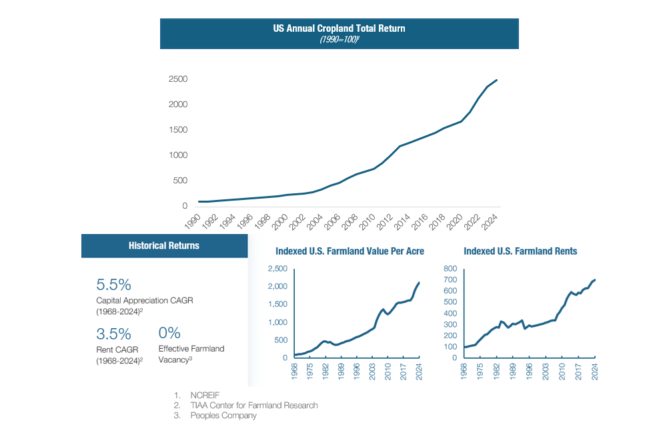Farmland Investments

Strategic Investment Opportunities
Farmland as a Long-Term Wealth-Building Asset
Farmland has demonstrated one of the most consistent long-term return profiles of any real asset class. The NCREIF Farmland Property Index has delivered annualized total returns of roughly 10%–12% over the past three decades, driven by a combination of stable income and steady appreciation. This strong historical performance makes farmland a powerful long-term store of value.
Income Stability Through Agricultural Cash Flows
Farmland generates reliable annual income through crop production or fixed-cash leases to farmers. Because food demand is non-cyclical, agricultural income has historically shown low volatility, even through recessionary periods. For investors seeking predictable cash flow streams, farmland provides durable annual yield.
Long-Term Appreciation & Inflation Protection
The supply of high-quality farmland is effectively fixed, while global food demand continues to rise. These fundamentals have contributed to long-term land appreciation rates that outpace inflation. Farmland has historically acted as a strong inflation hedge, with periods of rising CPI often correlating with stronger farmland value growth.
Low Correlation With Traditional Markets
Farmland returns exhibit low correlation with stocks, bonds, and commercial real estate, making it a powerful portfolio diversifier. Because performance is tied to agricultural productivity and global commodity demand rather than financial market cycles, farmland can help stabilize overall portfolio volatility.
Resilience Through Economic Cycles
During periods of market stress—including recessions and interest-rate spikes—farmland has demonstrated notable resilience. Core drivers such as crop yields, global food trade, and land scarcity tend to remain intact even when broader financial markets weaken, offering investors a defensive asset class.



